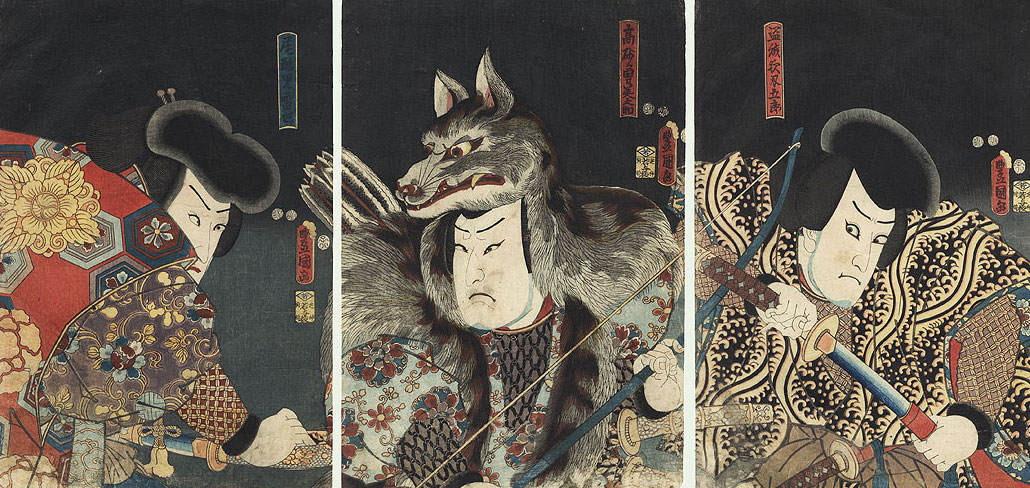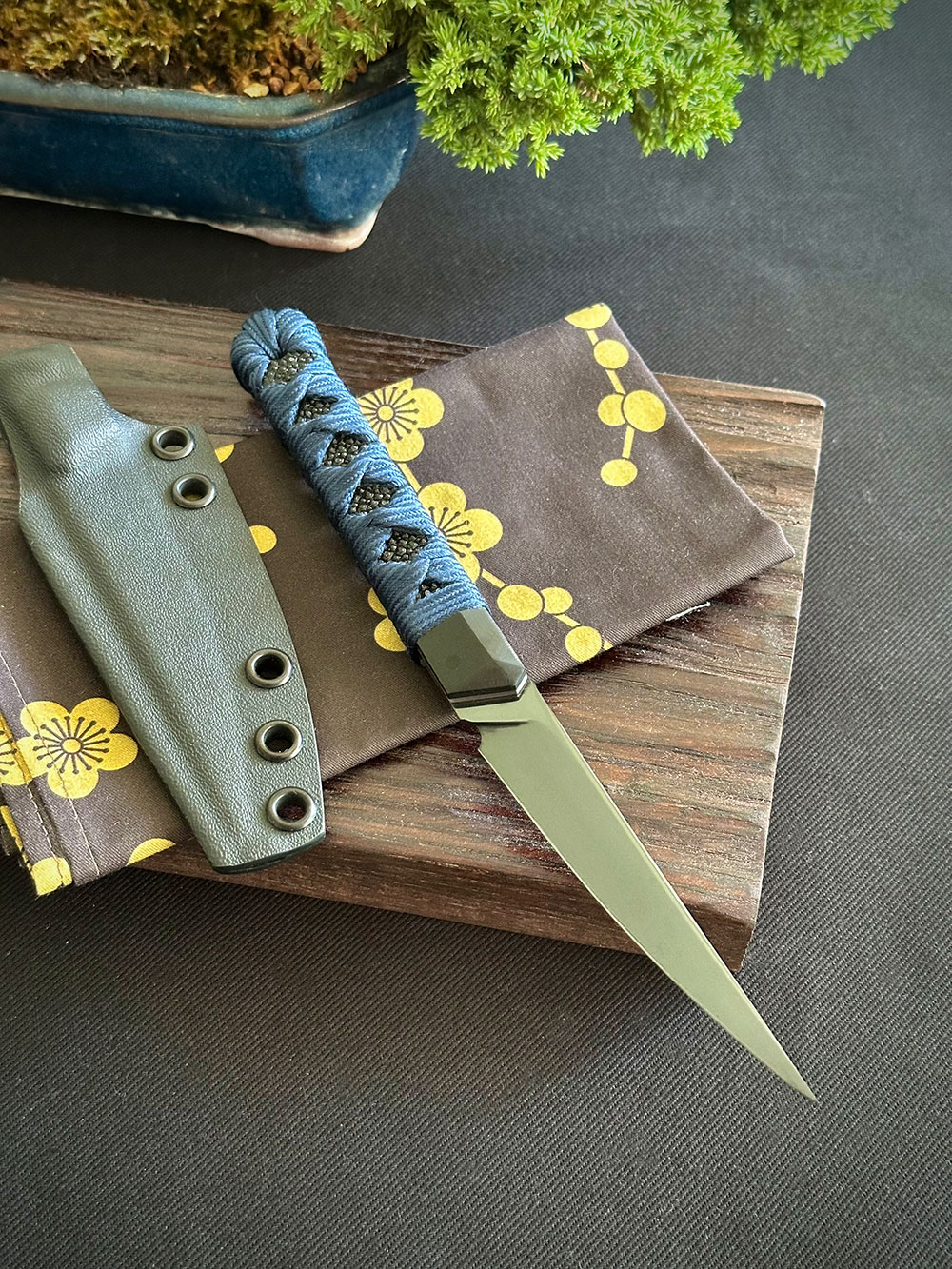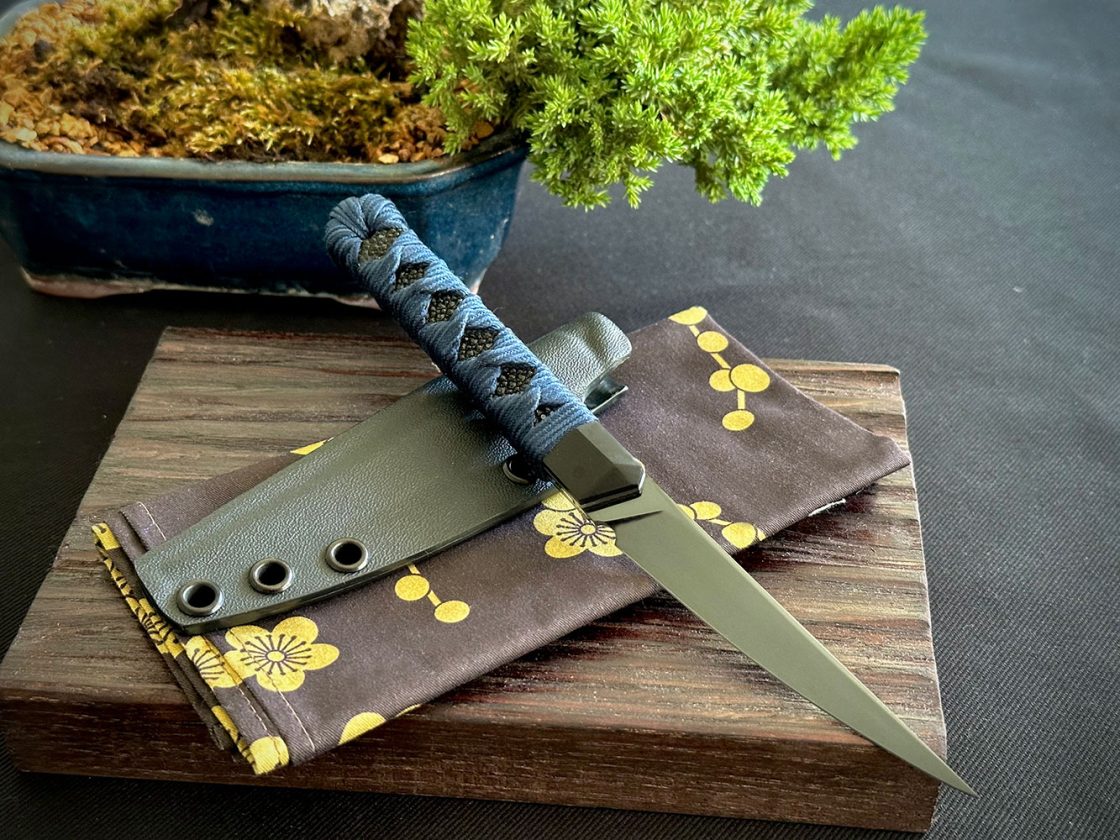
THE SHINOBI
A Modern EDC Kogatana
Design Philosophy of The Shinobi
Over the course of some years studying the Japanese Sword in great detail, I began taking a closer look at the often overlooked Kogatana. A little knife often mounted within the Saya of a larger sword like the Katana or Wakizashi, meant as a small field knife.
These little knives are often beautiful works of art in and of themselves. As one might expect from Japanese blade making, the Kogatana is an elegant little blade, simply crafted and mounted, and formed part of the Samurai’s daily kit for more regular utility oriented tesks.
The elegance of these little knives caught my eye. Especially seeing some on visits to the Royal Armouries Museum in Leeds, and the V&A Museum in London. Like all things Japanese the longer you look at them, the more details emerge.
I decided to try mimic this in a modern EDC Knife, a modern Kogatana for the modern Samurai. A small, light knife that is equally at home slicing up your lunch, or fending off an attacker.
The Shinobi is crafted from simple high carbon steels like 1095 and Aogami #2, but I feel this little blade may look great in a pattern welded steel too. Made from lighter weight stock around 4mm thick. I also do some weight reduction in the handle to ensure this feels effortless in the hand.
The blade is a single edge with a distal tapered false edge on the spine which mimics a shinogi on traditional, larger swords. The elegant blade culminates in a stout tip, despite its delicate appearance. The facets of the blade help to ensure tip integrity giving it ample piercing power
The Shinobi is a small and discreet knife that can be carried in a multitude of ways, from on the belt, IWB or OWB, concealed or otherwise, and even in a deep pocket carry position. This makes it very adaptable to the user.
The handle is also very neutral. A simple, slender handle offers a variety of ways to orient the blade for a variety of tasks. Some may be concerned about the lack of a guard, but the reality in my experience is that a solid grip is more than enough to keep it in your hand. Especially with a Tsukamaki style handle which offers all the feedback you need.
The Shinobi is a well rounded, all purpose knife. So don’t expect it to excel in any one area, but rather be adept at a few different ones.
The Aesthetics of the Shinobi
As mentioned, the Shinobi is heavily inspired by the elegance of Kogatana, and to accentuate this the handle is adorned with a variation of my modern Tsukamaki handle.
Using only the front filing ensures the knife still accepts and interacts with a kydex sheath well with out disrupting the wrap or requiring ugly resin coatings. The fitting is also sculpted to mimic the lines in the blade.
I’ve scaled down the Tsukaito to a thinner cord for this smaller handle to try and keep everything nicely in proportion. I am also experimenting with solid scale handles for this knife, in keeping with its kogatana lineage, so keep an eye out for this soon.
The Specifications of The Shinobi
While I will craft the Shinobi from different steels and different aesthetic themes, certain aspects are constant. Some adjustments to these base specifications can be accommodated, especially for legal considerations or specific carry needs.
Blade Steel: 1095, Aogami #2, SanMai & Damascus
Thickness: ~ 4mm / 0.15″
Blade Length: 90mm / 3.5″ along the cutting edge
Overall Length: 205mm / 8″
Handle Type: Modern Tsukamaki or Scales
A Note About Themes
I almost always work in themes when it comes to aesthetics. I prefer to consider the theme of the piece, and choose colours and textures based on this, rather than simply cobbling together what I’m asked for. I understand this is at odds with what many people expect from “custom” makers. but I’ve been there and done that.
I now work to express my artistic vision, and prefer my clients to be more like patrons of my art, than mere customers. My process involves getting to know you, why you are commissioning a Shrike, and to decipher what will suit you best. This is a process that happens over a discussion, or maybe a few discussions.
You can see some examples of my previous work in the galleries below. If you are interested in commissioning a Shrike for yourself please contact me to be put on my Waiting List.

